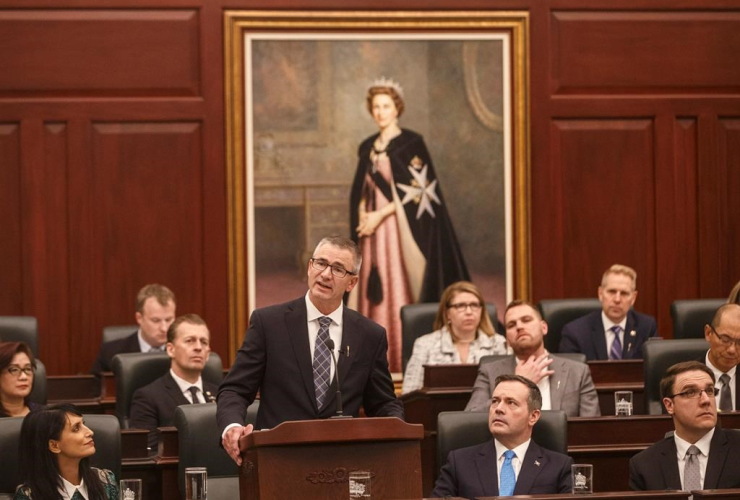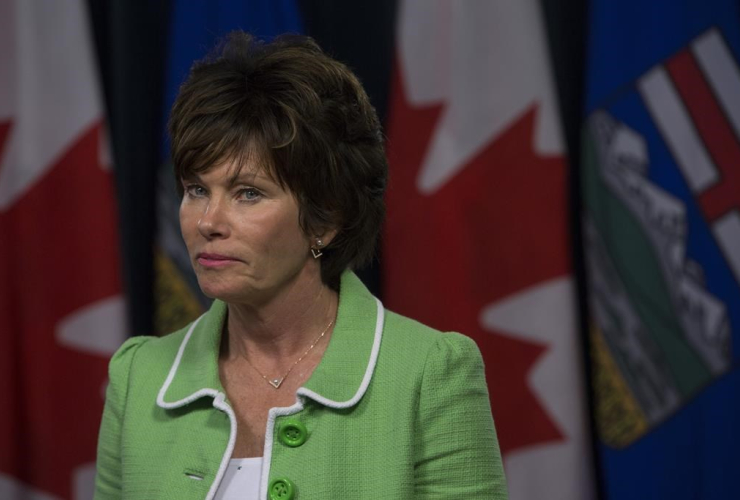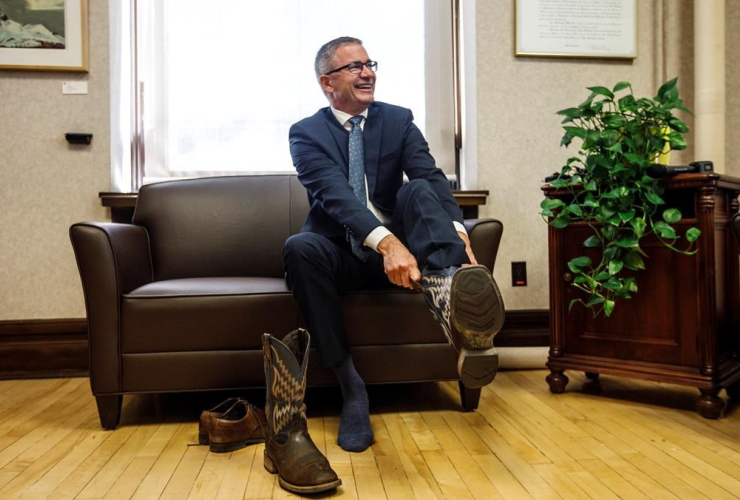As Alberta prepares to release details on its new climate plan, critics are wondering about funding cuts to environmental monitoring and greenhouse gas management already spelled out in last week's budget.
"We will have diminished capacity," said Marlin Schmidt, New Democrat environment critic. "We won't know if we're meeting environmental standards or not."
Departmental business plans indicate the office of science and monitoring within Alberta Environment is to take a five per cent cut next year, to just under $74 million. That's the office that oversees the overall impact of industrial development in the province, including the oilsands.
The office is to still receive a $50-million levy from industry specifically for oilsands monitoring.
The emissions management office is to take a 20 per cent cut by 2023. That office is partly responsible for measuring and verifying greenhouse gas emissions, as well as for checking compliance with other environmental regulations.
"All of those things are significantly diminished," said Shannon Phillips, a New Democrat member of the legislature who was the former environment minister.
Alberta Environment spokeswoman Jess Sinclair said the emissions management cuts are related to the United Conservative Party's new plan to cut carbon.
Sinclair also pointed to a $2-million increase in capital spending for scientific monitoring, most of it through an equipment donation from utility company Epcor.
"Science and environmental monitoring funding is in place so that Albertans can rest assured that their air, surface waters, groundwater, land, wildlife and fisheries are protected," she wrote in an email Monday.
The budget also includes spending cuts at the agency responsible for approving and assessing energy development in the province. The Alberta Energy Regulator is to lose about 22 per cent of its budget.
"Reducing both environmental monitoring programs and our energy regulator capacity does not make us a world-class resource and environmental manager," said Ben Israel, an analyst with the Pembina Institute, which is a clean-energy think tank.
The United Conservative government is currently examining the regulator's operations.
Schmidt suggests Albertans will have to increasingly rely on industry self-reporting.
"I don't think that's their job," he said. "It should be the government of Alberta who manages and reports on our climate change strategy."
The province is to release details of its new climate change policy on Tuesday. The plan will not contain a carbon tax. But it is expected to impose a levy on large industrial emitters for every tonne of carbon that exceeds a regulatory benchmark.
The details of how that benchmark will be set and what the cost will be haven't been announced, although most expect it to be $30 a tonne.
Earlier this month, the government told Environment Department employees that it was ending stand-alone offices for climate change and environmental monitoring.
Opposition members of the legislature warned at the time that the moves were a prelude to funding cuts.
This report by The Canadian Press was first published Oct. 28, 2019.
Even before the change in
Even before the change in government, it was almost impossible for an individual to track local pollution. Alberta Environment and Parks has stated that it "would be impossible to test groundwater for all of the chemicals used in high pressure fracking." Results of the highly vaunted "Flowback Study" done under the auspices of the AER, meant to determine what the constituents of flaring emissions from fracked wells actually are and how they affect public health, have never been revealed to the public, despite the testing having been completed for at least three years. Reducing funds available for studies can only make a bad situation worse. The plan to tax "large emitters" will do nothing to regulate the thousand of fracked wells across Alberta. This process has been banned in numerous jurisdictions world wide, due to the clear risks to public health and environment. Climate effects are also serious, with the amounts of methane emitted unknown. Estimates have been described as "a guess." Having industry report on itself is a clear path to disaster.






Comments